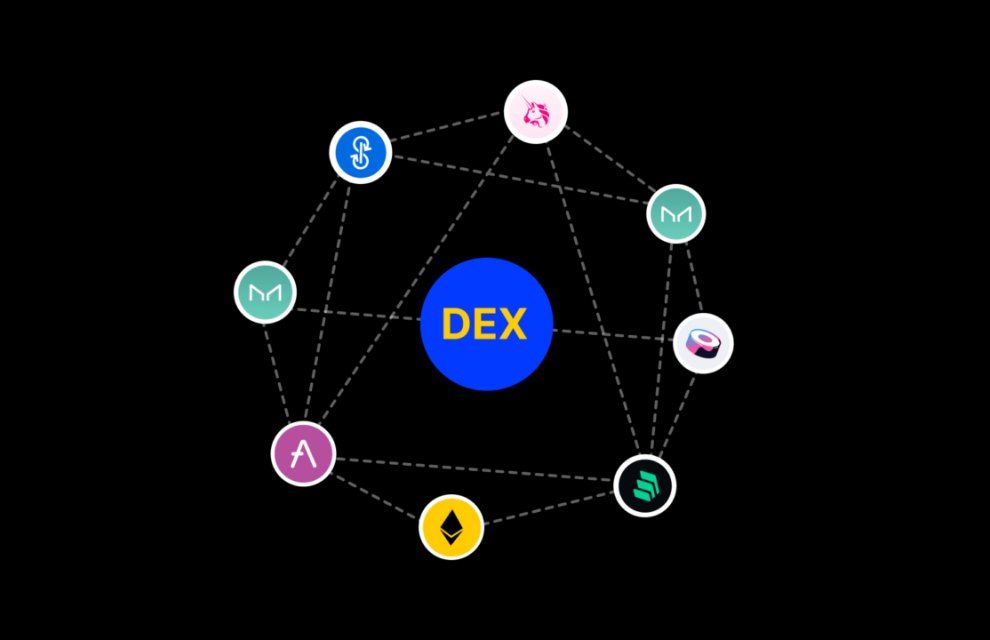Understanding DEX Arbitrage

DEX arbitrage is a highly effective strategy for maximizing profits in the fast-moving world of cryptocurrency. By leveraging price discrepancies across decentralized exchanges (DEXs), traders can exploit these inconsistencies to secure quick and reliable outcomes. This form of blockchain arbitrage involves acquiring an asset at a lower price on one DEX and transferring it at a higher price on another. Implementing a structured arbitrage approach requires real-time monitoring and swift execution, as price gaps close quickly. When executed correctly, crypto arbitrage enhances trading outcomes while optimizing efficiency in the decentralized finance (DeFi) landscape.
What Is DEX Arbitrage?
DEX arbitrage takes advantage of price variations for the same asset across different decentralized exchanges. Since prices on DEXs fluctuate based on liquidity, trading volume, and demand, disparities naturally arise. Traders who capitalize on these discrepancies by executing simultaneous buy-and-sell trades can secure profitable opportunities without speculating on price trends.
This strategy requires fast execution and automation, as price differences are often short-lived. Many traders deploy arbitrage bots and algorithmic trading tools to identify and exploit price inefficiencies efficiently. Since this method revolves around capturing price gaps rather than predicting market trends, it is considered a low-risk strategy with a focus on market efficiency.
Simple Tips for Profitable Crypto Arbitrage
To succeed in crypto arbitrage, traders should follow these key strategies:
✅ Monitor Multiple DEXs – Use price tracking tools to identify profitable arbitrage opportunities across various exchanges. ✅ Automate Trading – Implement arbitrage bots to execute trades at optimal speeds. ✅ Account for Fees – Consider transaction fees, withdrawal costs, and gas fees, as these can impact profitability. ✅ Ensure High Liquidity – Trade on high-liquidity pools to avoid slippage and delayed execution. ✅ Diversify Strategies – Explore different trading pairs and cross-chain arbitrage to mitigate risks and expand potential gains. ✅ Stay Updated – Monitor market trends, regulatory updates, and exchange policy changes that may impact arbitrage opportunities.
By applying these best practices, traders can optimize their crypto arbitrage strategy and increase earnings.
Why Is DEX Arbitrage a Profitable Strategy?
DEX arbitrage thrives because each decentralized exchange operates independently, leading to varying prices for the same asset. This presents frequent opportunities for traders to buy low on one platform and sell high on another. The profitability of DEX arbitrage is driven by:
🔹 Market Inefficiencies – Differences in demand, liquidity, and user activity create price gaps. 🔹 Low-Risk Strategy – Since traders are not speculating on market direction, risk exposure is minimized. 🔹 Automation Advantage – Trading bots and AI-driven strategies allow rapid execution and multiple trades simultaneously. 🔹 Scalability – With the right tools, traders can capitalize on countless opportunities without significant capital investment.
What’s the Secret to Success in DEX Arbitrage?
The key to DEX arbitrage success lies in speed, precision, and automation. To maximize earnings, traders should:
🚀 Use Automated Bots – Speed is crucial, and bots ensure immediate trade execution. 🚀 Optimize Fee Structures – Monitor gas fees, withdrawal costs, and network congestion to maintain profit margins. 🚀 Trade on High-Liquidity Pools – Ensuring sufficient liquidity prevents slippage and trade failures. 🚀 Understand Market Trends – Being aware of upcoming protocol changes, liquidity shifts, or token rebalancing can provide an edge. 🚀 Set Price Alerts – Configuring notifications for significant price discrepancies across DEXs allows traders to act quickly.
By implementing these strategies, traders can gain a competitive edge in DEX arbitrage.
Best Techniques for DEX Arbitrage Profitability
💡 Monitor Multiple DEXs – Regularly check prices of the same asset across multiple decentralized exchanges. 💡 Deploy Arbitrage Bots – Utilize bots that monitor price discrepancies in real-time and execute trades automatically. 💡 Engage in Cross-Chain Arbitrage – Expand trading opportunities by leveraging price differences across multiple blockchains. 💡 Check Liquidity Pools – Trade in pools with high liquidity to ensure smooth execution. 💡 Use Price Alerts – Set alerts to receive real-time notifications about profitable arbitrage opportunities. 💡 Calculate Costs in Advance – Factor in transaction fees to confirm that profits outweigh expenses.
How Do DEX Price Discrepancies Create Profit Potential?
Since each DEX operates independently, differences in liquidity and demand create temporary price gaps for the same cryptocurrency. Traders capitalize on these inefficiencies by executing rapid arbitrage trades, turning these fluctuations into immediate profit.
Using DEX API integration, traders can access real-time data and automate their transactions. Acting quickly is essential, as these price gaps close fast. Automated tools enable traders to consistently transform temporary price variations into scalable arbitrage outcomes.
Final Thoughts
DEX arbitrage remains one of the most accessible and profitable strategies in DeFi. By capitalizing on market inefficiencies, leveraging automation, and executing trades with precision, traders can secure consistent results in the decentralized trading ecosystem. As the DeFi space evolves, advanced tools and algorithmic strategies will continue to refine and enhance DEX arbitrage, making it a cornerstone strategy for smart traders.